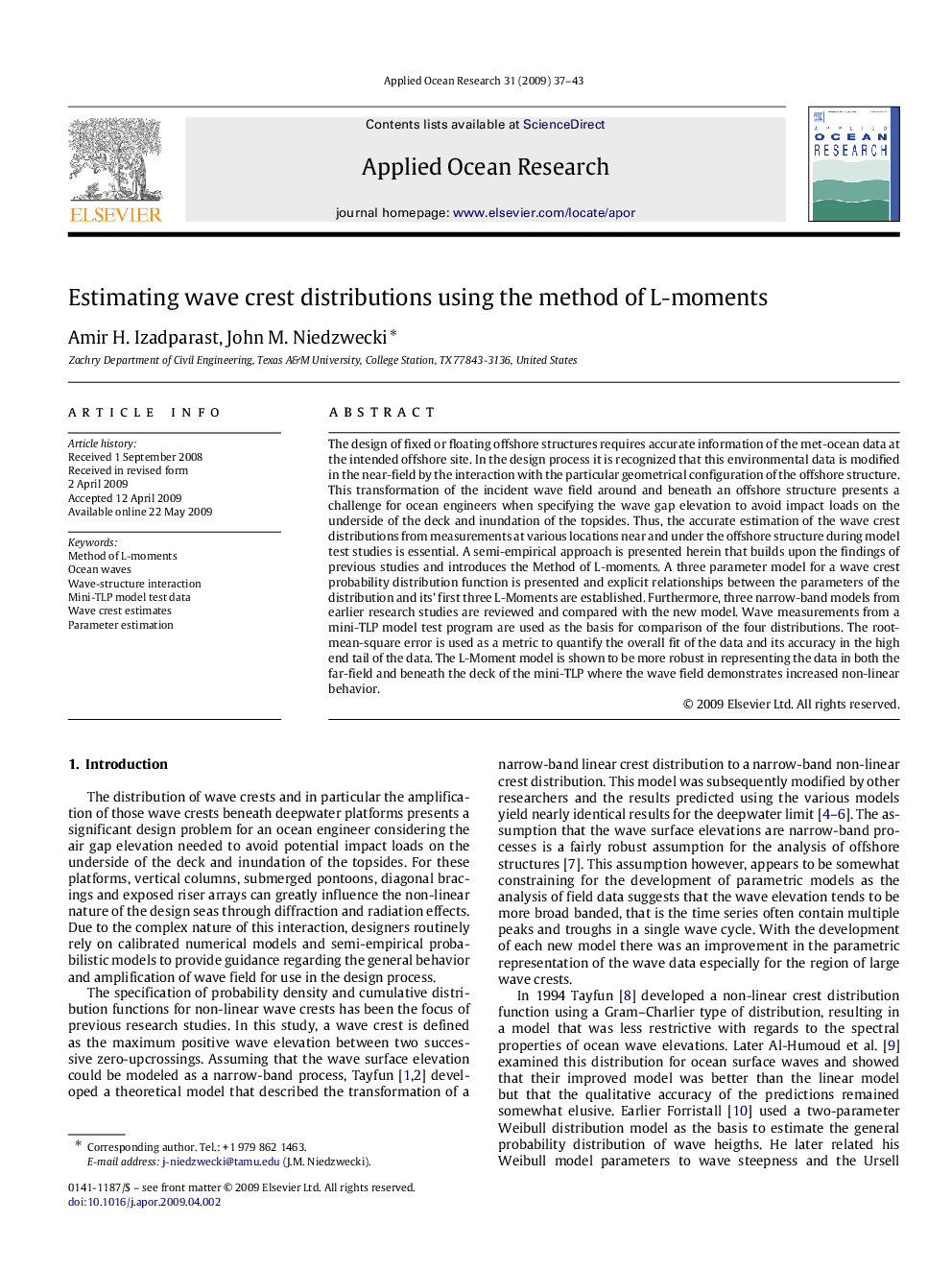| Article ID | Journal | Published Year | Pages | File Type |
|---|---|---|---|---|
| 1720371 | Applied Ocean Research | 2009 | 7 Pages |
The design of fixed or floating offshore structures requires accurate information of the met-ocean data at the intended offshore site. In the design process it is recognized that this environmental data is modified in the near-field by the interaction with the particular geometrical configuration of the offshore structure. This transformation of the incident wave field around and beneath an offshore structure presents a challenge for ocean engineers when specifying the wave gap elevation to avoid impact loads on the underside of the deck and inundation of the topsides. Thus, the accurate estimation of the wave crest distributions from measurements at various locations near and under the offshore structure during model test studies is essential. A semi-empirical approach is presented herein that builds upon the findings of previous studies and introduces the Method of L-moments. A three parameter model for a wave crest probability distribution function is presented and explicit relationships between the parameters of the distribution and its’ first three L-Moments are established. Furthermore, three narrow-band models from earlier research studies are reviewed and compared with the new model. Wave measurements from a mini-TLP model test program are used as the basis for comparison of the four distributions. The root-mean-square error is used as a metric to quantify the overall fit of the data and its accuracy in the high end tail of the data. The L-Moment model is shown to be more robust in representing the data in both the far-field and beneath the deck of the mini-TLP where the wave field demonstrates increased non-linear behavior.
